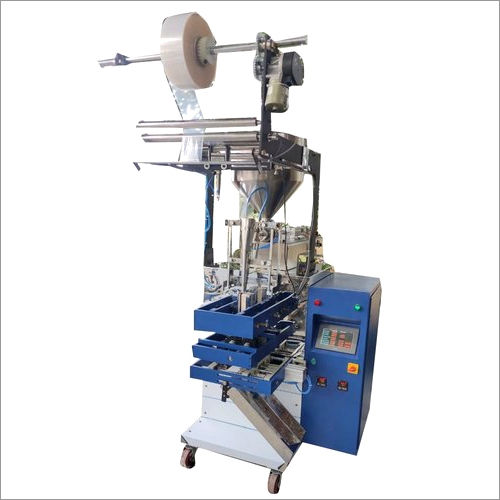
Automatic Liquid Pouch Packaging Machine
220000 INR/Unit
Product Details:
- Type Automatic Liquid Pouch Packaging Machine
- Material Stainless Steel
- Feature Rust Proof Durable Less Power Consumable Highly Efficient
- Capacity 20-30 Pcs/min
- Computerized No
- Automatic Grade Semi-Automatic
- Control System Frequency Speed Control
- Click to view more
X
Automatic Liquid Pouch Packaging Machine Price And Quantity
- 1 Unit
- 220000 INR/Unit
Automatic Liquid Pouch Packaging Machine Product Specifications
- Rust Proof Durable Less Power Consumable Highly Efficient
- Automatic Liquid Pouch Packaging Machine
- Aprox 300 Kilograms (kg)
- 3000 Watt (w)
- Blue
- Semi-Automatic
- 1 Year
- 20-30 Pcs/min
- No
- Stainless Steel
- 1400 X 900 X 1600 Millimeter (mm)
- AC230 Volt (v)
- Electric
- Frequency Speed Control
Automatic Liquid Pouch Packaging Machine Trade Information
- Cash Advance (CA)
- 10 Days
- All India
Product Description
An automatic liquid pouch packaging machine is a type of machinery designed to efficiently and automatically fill and seal pouches with liquid products. These machines are commonly used in industries such as food and beverage, pharmaceuticals, cosmetics, and chemical manufacturing.
Here are some key features and components typically found in automatic liquid pouch packaging machines:
1. Filling System:
- These machines are equipped with a liquid filling system that accurately measures and dispenses the desired amount of liquid into each pouch. Common filling mechanisms include piston fillers, peristaltic pumps, and gravity fillers.
2. Pouch Forming and Sealing:
- The machine forms pouches from a roll of packaging material, typically made of flexible materials like plastic or laminates. The pouches are then filled with liquid and sealed. The sealing process can use methods such as heat sealing or ultrasonic sealing to ensure a secure and leak-proof seal.
3. Control System:
- Modern machines are equipped with a control system that allows operators to set parameters such as fill volume, pouch size, and sealing temperature. This ensures consistency and precision in the packaging process.
4. Material Handling:
- Automatic liquid pouch packaging machines include mechanisms for handling packaging material rolls, feeding them through the machine, and cutting them into individual pouches. This may involve a series of rollers, guides, and cutting devices.
5. Cleaning and Sanitization:
- Hygiene is crucial, especially in industries like food and pharmaceuticals. Many machines are designed for easy cleaning and sanitization, with components that can be disassembled for thorough cleaning between production runs.
6. Quality Control:
- Some machines incorporate quality control measures, such as sensors or cameras, to detect and reject pouches with defects or inconsistencies in the filling and sealing process.
7. Integration with Other Equipment:
- In a production line, the liquid pouch packaging machine may be integrated with other equipment such as conveyor systems, labeling machines, and carton packaging machines for a streamlined and automated production process.
8. Safety Features:
- Safety features are incorporated to protect operators and prevent damage to the machine. This may include emergency stop buttons, safety interlocks, and protective guards.
9. Output and Speed:
- The speed and output capacity of these machines vary, and manufacturers often specify the maximum pouches per minute (PPM) or liters per minute (LPM) that the machine can handle.
10. Customization Options:
- Some machines offer flexibility for different pouch sizes and shapes, allowing manufacturers to package a variety of liquid products.
Applications of Automatic Liquid Pouch Packaging Machine:
1. Food and Beverage Industry:
- Beverages: These machines are widely used for packaging liquid beverages such as water, juices, soft drinks, energy drinks, and dairy products.
- Edible Oils: Liquid pouch packaging machines are used for packaging edible oils, cooking oils, and other liquid fats.
2. Pharmaceutical Industry:
- Oral Liquid Medications: Liquid medications such as syrups, cough syrups, and other oral solutions are efficiently packaged using these machines.
- Injectables: Some liquid pouch packaging machines are designed to handle pharmaceutical products in small volumes, including injectables.
3. Cosmetics and Personal Care:
- Shampoos and Conditioners: Liquid pouch packaging is employed for packaging hair care products in pouches.
- Liquid Soaps and Body Wash: Products like liquid soaps and body wash are commonly packaged using these machines.
4. Chemical Industry:
- Detergents and Cleaning Liquids: Liquid pouch packaging machines are used to package household cleaning products, detergents, and industrial cleaning liquids.
- Chemical Solutions: Chemical products in liquid form, such as industrial solvents and cleaning agents, can be efficiently packaged using these machines.
5. Automotive Industry:
- Automotive Fluids: Lubricants, coolants, and other automotive fluids are often packaged in pouches for convenience and ease of use.
6. Agriculture:
- Agrochemicals: Liquid pesticides, fertilizers, and other agrochemicals can be efficiently packaged using liquid pouch packaging machines.
7. Pet Care:
- Pet Shampoos and Healthcare Products: Liquid pouch packaging is utilized for packaging pet care products, including shampoos and healthcare solutions for pets.
8. Retail and Convenience Products:
- Condiments and Sauces: Liquid pouch packaging machines are used for packaging condiments, sauces, and liquid flavorings in convenient single-use pouches.
- Salad Dressings: Single-serving pouches of salad dressings are common applications.
9. Dairy Industry:
- Liquid Dairy Products: Milk and other liquid dairy products can be efficiently and hygienically packaged using these machines.
10. Contract Packaging Services:
- Companies offering contract packaging services use automatic liquid pouch packaging machines to cater to a diverse range of clients and products.
Frequently Asked Questions:
Q. What is an automatic liquid pouch packaging machine?
Ans: An automatic liquid pouch packaging machine is a piece of industrial equipment designed to automatically fill, seal, and package liquid products into pouches. It is commonly used in various industries for packaging liquids in a cost-effective and efficient manner.
Q. What types of liquids can be packaged using these machines?
Ans: These machines can be used to package a wide range of liquids, including beverages (water, juices, soft drinks), food products (sauces, condiments, oils), pharmaceuticals (syrups, oral medications), chemicals, cosmetics, and more.
Q. How does the filling mechanism work in these machines?
Ans: The filling mechanism varies but often involves precise measurement and dispensing of liquid into each pouch. Common filling mechanisms include piston fillers, peristaltic pumps, and gravity fillers.
Q. What types of pouch materials can be used?
Ans: Automatic liquid pouch packaging machines typically work with flexible packaging materials, such as plastic films or laminates. These materials help create pouches that are durable, lightweight, and have good barrier properties.
Q. Can these machines handle different pouch sizes?
Ans: Yes, many machines are designed to be adjustable and can handle different pouch sizes. This flexibility is useful for manufacturers who need to package various product volumes.
Q. What are the key advantages of using automatic liquid pouch packaging machines?
Ans: Advantages include increased efficiency, reduced labor costs, precise filling accuracy, hygienic packaging, customizable pouch sizes, and the ability to handle a variety of liquid products.
Q. How is the sealing process done?
Ans: Sealing is typically done through methods such as heat sealing or ultrasonic sealing. These processes ensure a secure and leak-proof seal for the pouches.
Q. Are these machines easy to clean and maintain?
Ans: Many machines are designed for easy cleaning and maintenance. They often have components that can be disassembled, and some may feature automated cleaning processes.
Q. What safety features are incorporated into these machines?
Ans: Safety features can include emergency stop buttons, safety interlocks, and protective guards to ensure the safety of operators and prevent damage to the machine.
Q. Can these machines be integrated into existing production lines?
Ans: Yes, many automatic liquid pouch packaging machines are designed to be integrated into existing production lines. They can work in conjunction with other equipment such as conveyors, labeling machines, and carton packaging machines.
Q. What is the typical output capacity of these machines?
Ans: Output capacity varies, and manufacturers usually specify the maximum pouches per minute (PPM) or liters per minute (LPM) that the machine can handle. The speed depends on factors like pouch size, fill volume, and the complexity of the sealing process.
Q. Is training required to operate these machines?
Ans: While these machines are designed for user-friendly operation, operators may need training to understand the specific controls, settings, and maintenance procedures. Manufacturers often provide training and documentation.
FAQs of Automatic Liquid Pouch Packaging Machine:
Q: What type of material is the Automatic Liquid Pouch Packaging Machine made of?
A: The machine is made of stainless steel.Q: Does the machine have a computerized control system?
A: No, the control system is frequency speed control.Q: What is the automatic grade of the machine?
A: The machine is semi-automatic.Q: Is the machine durable and rust proof?
A: Yes, the machine is both durable and rust proof.Q: Is the machine power efficient?
A: Yes, the machine consumes less power and is highly efficient.Tell us about your requirement

Price:
Quantity
Select Unit
- 50
- 100
- 200
- 250
- 500
- 1000+
Additional detail
Mobile number
Email
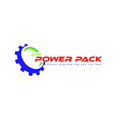

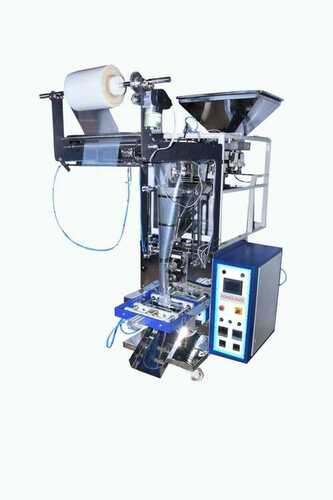
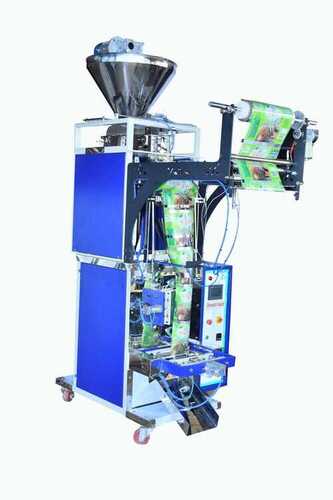
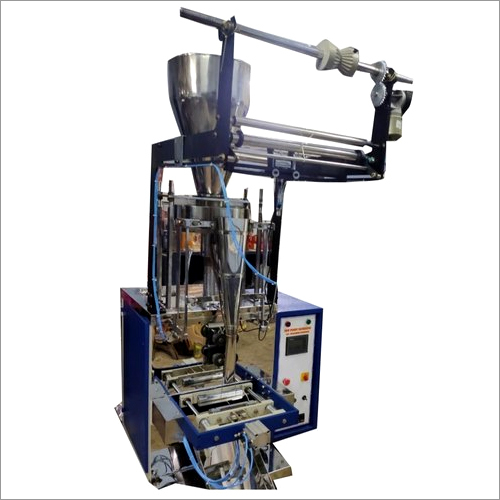
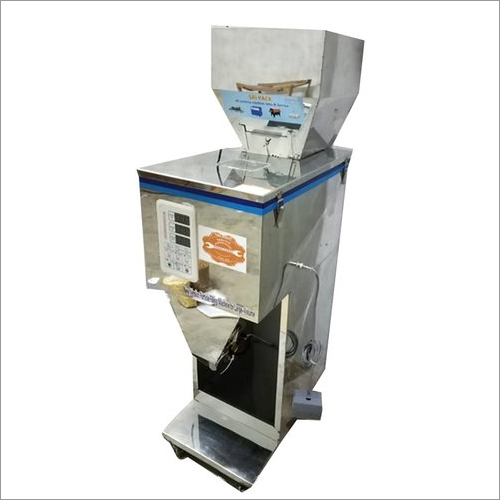


 Send Inquiry
Send Inquiry Send SMS
Send SMS Call Me Free
Call Me Free English
English Spanish
Spanish French
French German
German Italian
Italian Chinese (Simplified)
Chinese (Simplified) Japanese
Japanese Korean
Korean Arabic
Arabic Portuguese
Portuguese